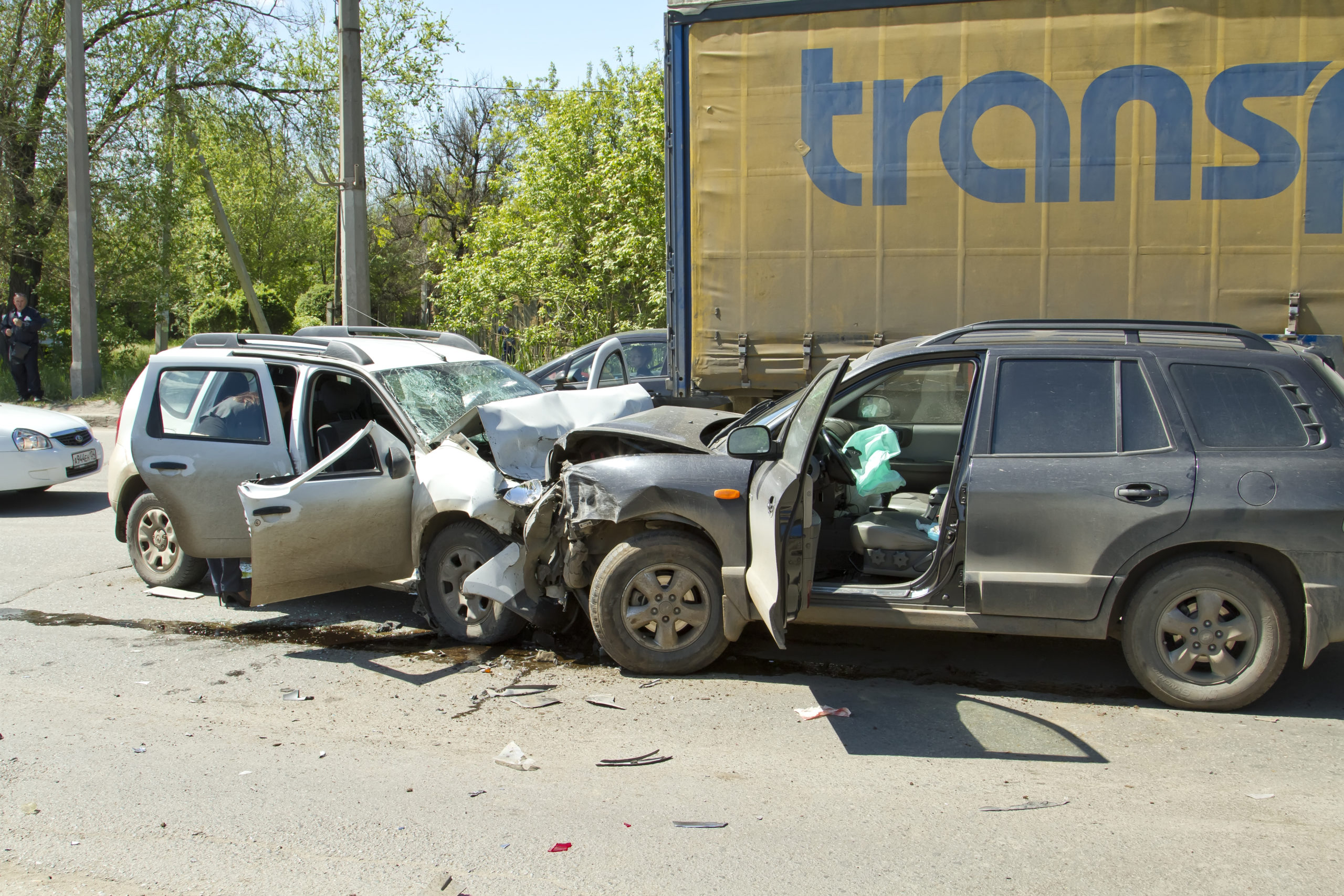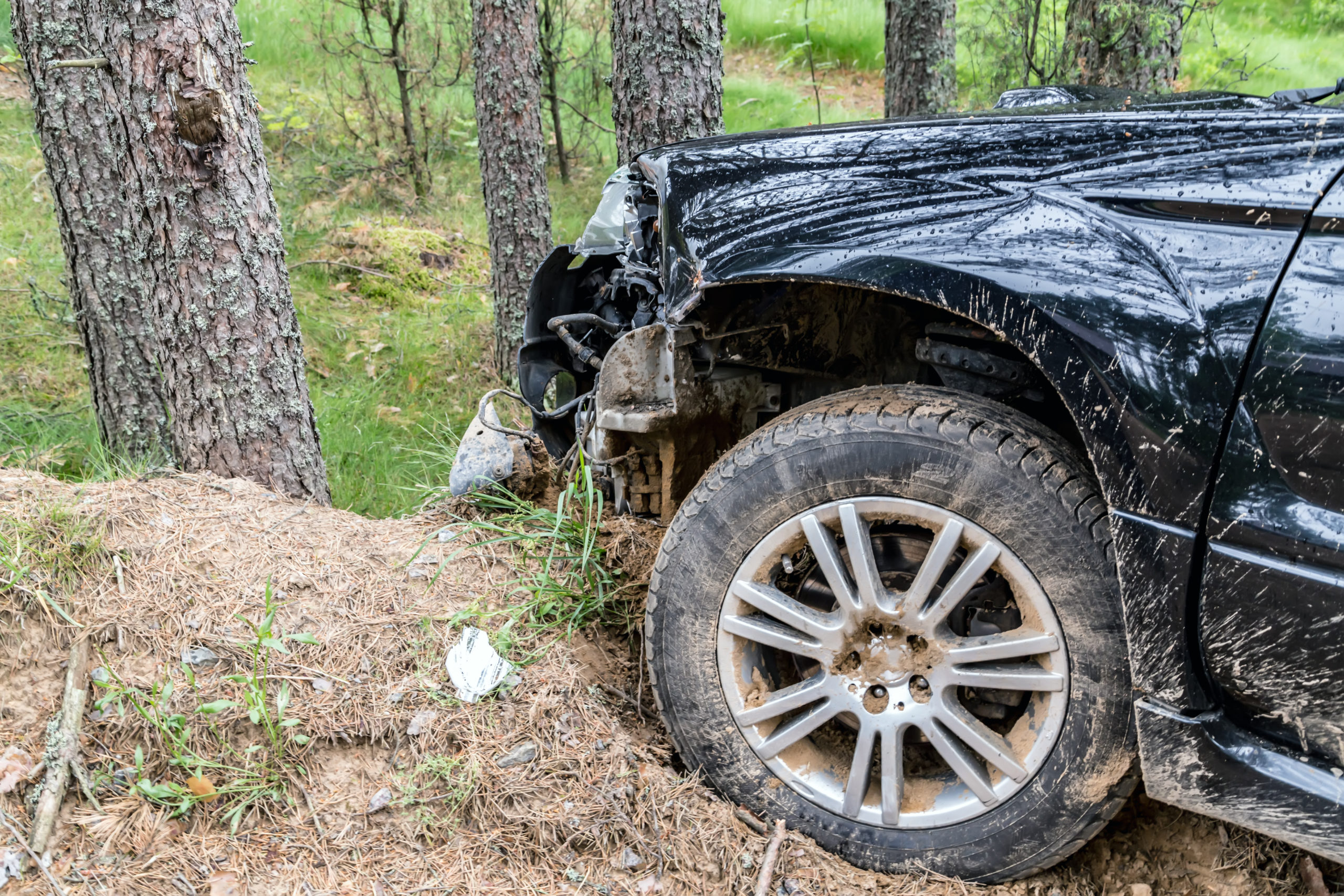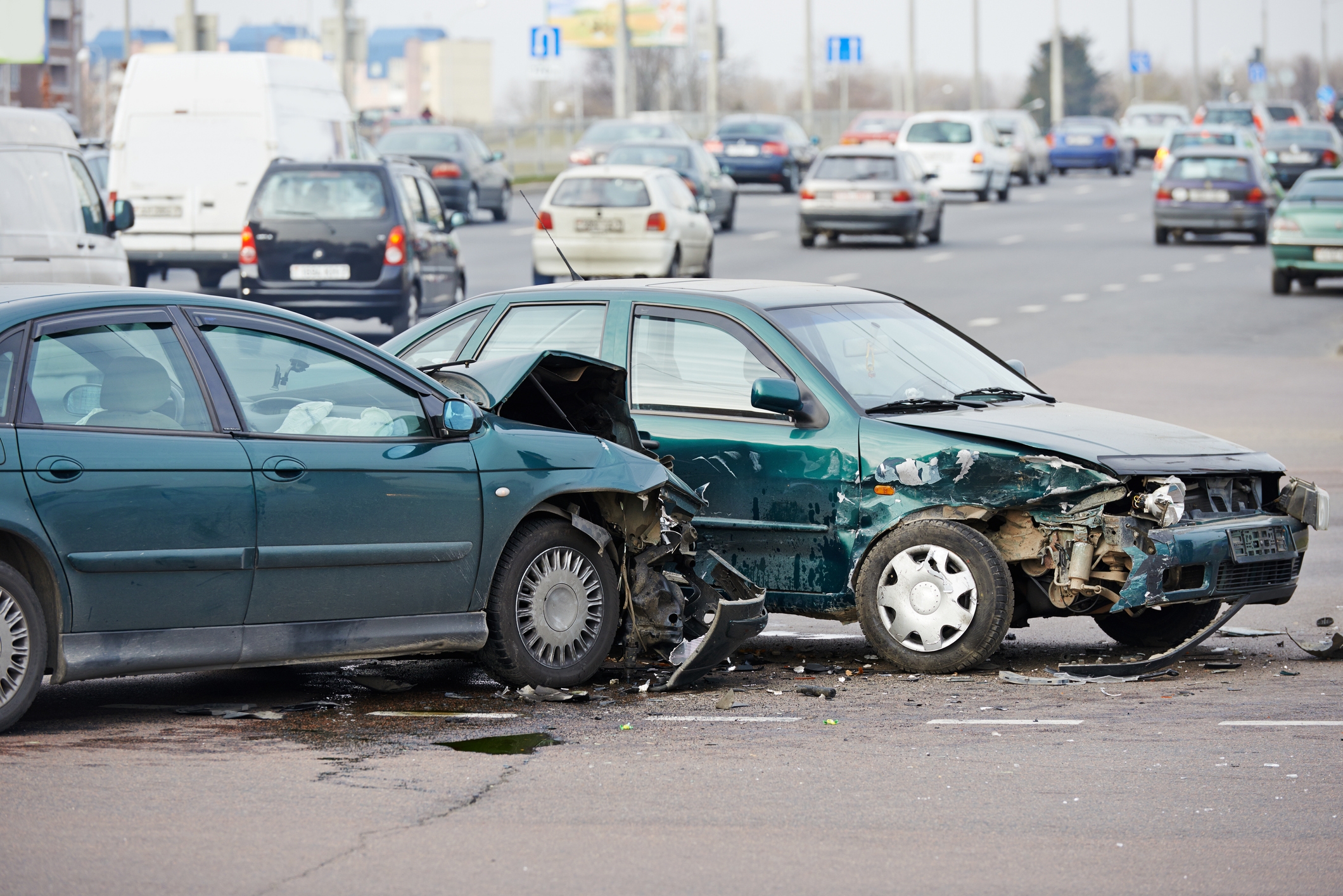
Car accidents are among the most terrifying things a person can experience in the course of everyday life. There are not many driving experiences more horrifying than the helpless despair one feels when another vehicle is rushing towards them, certain to make impact in mere seconds. Head-on collisions rank high among the deadliest types of car accidents, often leaving victims with life-altering injuries. Those in the unfortunate position of seeking just compensation after a head-on collision will find relief in the capable hands of an experienced personal injury attorney.
What Is a Head-on Collision?
A head-on collision, sometimes called a frontal collision, occurs when the front of one vehicle crashes into the front of another vehicle, with the two vehicles traveling in opposite directions. They usually occur on two-lane roads without a physical barrier separating the two opposite lanes of traffic. A typical head-on collision involves one driver veering onto the wrong side of the road and colliding with an oncoming vehicle.
Common Injuries Caused by Head-on Collisions
Drivers involved in head-on collisions frequently suffer severe injuries. The severity of the injuries suffered owes to two crucial factors: the closeness of the front passengers to the site of impact, the front of the vehicle, and the high rate of speed at which each vehicle is commonly traveling at the point of impact. The injuries are worse still when the two vehicles differ significantly in size.
Injuries commonly caused by head-on collisions include:
- Whiplash
- Concussions and traumatic brain injuries
- Damage to the spinal cord, possibly complete paralysis
- Broken bones
- Chest and abdominal injury
- Organ damage, including to the heart, lungs, liver, kidneys, and spleen
- Fractured facial bones
- Herniated or ruptured discs
- Injured arms and legs
- Friction burns if thrown from vehicle
How Common Are Head-on Collisions?
Though head-on collisions occur relatively infrequently, they are statistically among the most dangerous types of traffic accidents. The National Highway Traffic Safety Administration (NHTSA) reports that just in 2018, head-on collisions accounted for 3,651 deaths and 80,000 injuries across the country. In the same year, head-on collisions were responsible for 10.8% of all traffic accident-related deaths, second only to side-impact collisions.
NHTSA findings reflect that head-on collisions are more common in rural areas, making up 13% of fatal crashes in rural areas and under 7% of fatal crashes in urban areas. The New York State Senate estimates approximately 86.6% of New York is rural, suggesting perhaps that head-on collisions are more likely to occur relatively frequently in those parts of the state.
What to Do if Involved in a Head-on Collision in NY
Involvement in any type of traffic accident can be disorienting and deeply unsettling. These feelings are compounded in the case of head-on collisions, with many victims left with severe injuries requiring immediate medical attention. Nevertheless, people involved in a head-on collision should be aware of a few key steps immediately following an accident to make certain they comply with New York state law and give themselves the best chance at achieving just compensation.
Options for Compensation When Involved in a Head-on Collision
Head-on collisions customarily leave their victims with various expenses, from property damage and lost wages to medical expenses. In the State of New York, people involved in a head-on collision have four main options for compensation:
- No-fault or Personal Injury Protection (PIP) Benefits
- Third-party Insurance Claims
- Filing a Lawsuit
- Small Claims Court
No-fault or Personal Injury Protection Benefits
New York’s state law requires registered motorists to carry a car insurance policy providing no-fault coverage, also called personal injury protection (PIP) benefits. Under no-fault coverage, the insurance company will cover up to $50,000 of monetary expenses incurred by the policyholder and certain other parties involved in a traffic accident, regardless of who was at fault for causing the accident. No-fault coverage in New York is subject to the following constraints:
Covered–
- Up to $50,000 for each of the policyholder, the policyholder’s passengers, and any pedestrians hit by the policyholder’s vehicle
- Medical expenses, lost wages, and other reasonable and necessary accident-related expenses
Not Covered–
- Non-monetary expenses, such as pain and suffering
- Property damage
People hoping to recover under their no-fault policy should be aware of the following filing deadlines:
- No-fault claim: 30 days from time of accident
- Medical claims: 45 days from time of treatment
- Loss of earnings and other necessary expenses: 90 days from when incurred
Third-Party Insurance Claims
It is our attorneys’ experience that no-fault coverage is often insufficient in the case of head-on collisions, given their severity and potential to cause serious injuries.
People involved in head-on collisions frequently sustain injuries imposing medical expenses far beyond no-fault coverage’s $50,000 cap. The trauma of a head-on collision can also leave victims wishing to pursue compensation for pain and suffering, a non-monetary expense not included in no-fault coverage. One option for people wanting to go outside of the no-fault benefits system is a third-party insurance claim.
A third-party insurance claim is a claim for compensation filed with the other involved driver’s insurance company. Unlike no-fault coverage, a third-party insurance claim involves an insurance adjuster investigating the accident and determining which driver is at-fault. Third-party insurance claims allow drivers to pursue non-monetary expenses, such as pain and suffering, in addition to monetary expenses, like lost earnings and medical expenses.
New York’s state law ISC §51-5104 requires people injured in a traffic accident to meet a legal threshold before they may go outside of the no-fault benefits system. The threshold requires that one’s injuries be sufficiently “serious,” defined in ISC §51-5102(d) to include:
- significant disfigurement
- bone fracture
- permanent limitation of use of a body organ or member
- significant limitation of use of a body function or system, or
- substantially full disability for 90 days
Other conditions allowing one to go outside of the no-fault benefits system are:
- Having covered expenses exceeding no-fault benefits’ $50,000 cap
- Injuries resulting in death
- Not having insurance complying with New York law’s minimum coverage requirements
While third-party insurance claims don’t immediately involve lawsuits, it is not advisable for one to pursue this option. An insurance company’s primary incentive is to pay out as little money as possible. A qualified personal injury attorney will prove crucial in holding the insurance company accountable and skillfully negotiating just compensation for the injured driver.
Filing a Lawsuit
A second option for drivers injured in a head-on collision in New York hoping to go outside of the no-fault benefits system is filing a lawsuit. Similar to a third-party claim, a driver hoping to go outside of the no-fault benefits system to file a lawsuit must meet the “serious injury” threshold under ISC §51-5104 or one of the other sufficient conditions (discussed under the “Third-party Claim” section above). Also like third-party claims, filing a lawsuit involves accusing the other driver of being at fault for the accident and allows drivers to seek both monetary claims (lost wages and medical expenses) and non-monetary claims (pain and suffering). The statute of limitations holds this type of lawsuit must be filed within three years from the date of the accident.
The lawsuit option is not limited to holding the at-fault driver responsible. Parties other than the drivers can contribute to causing an accident and can be held responsible under the law. These parties are most commonly a car dealer or manufacturer, for having sold a defective vehicle, and the State, for having failed to maintain safe road conditions.
This was the claim made in Pierce v. State, #2011-031-049. Harold and Mary Pierce were at the intersection of State Route 78 and East Arcade Road in Java, New York, when their vehicle collided head-on with the vehicle driven by Trisha Kraft, who had entered the intersection in front of them when she did not have the right of way. Tragically, Harold died as a result of the collision, while Mary suffered serious injuries.
Mary sued the State of New York, claiming the State was negligent because the unsafe design of the highway and lack of proper signs caused the accident. While the Court of Claims of New York acknowledged that there are circumstances under which the State can be held liable for failure to properly maintain the roads causing an accident, the State ultimately won the lawsuit because Mary failed to provide enough evidence. Predictably, this sort of lawsuit requires a skilled attorney able to present a convincing case.
Small Claims Court
Drivers involved in a head-on collision in New York may bring their case to small claims court. This option is most commonly used for vehicle damage claims, which are not covered by no-fault benefits. Small claims court is limited by New York’s state law UCT §18-1801 to monetary claims, such as lost wages and medical expenses, in amounts of $5000 or less.
Determining Fault in a Head-on Collision
When one driver accuses another of being at fault in a head-on collision, the question considered by both insurance adjusters and courts is whether the driver was negligent. Negligence is a complicated legal concept. Simply put, a driver is negligent if they were required to be careful in some way, they failed to be careful, and this failure caused another to be injured. A driver can be negligent in various ways:
- Impaired driving (driving while intoxicated)
- Aggressive and reckless driving
- Distracted driving (driving while on the phone)
- Driving while fatigued
- Not following the rules of the road (not yielding to another’s right of way)
Traffic accidents may also be caused by factors independent of the drivers:
- Poor weather conditions
- Malfunction of one’s vehicle
The driver most commonly at fault in a head-on collision is the driver on the wrong side of the road.
This driver is typically either impaired in some way (intoxicated, drowsy, etc.) or is guilty of an unsafe driving maneuver, such as passing a driver in front of them on a two-lane road using the opposite lane of traffic. Nevertheless, determining fault in a head-on collision can come down to narrow facts based on conflicting evidence, particularly when there is little concrete evidence.
This was the case in Pfeiffer v. Transport Leasing, Inc. On a foggy morning, Pfeiffer’s automobile collided head-on with a tractor-trailer owned and operated by Transport Leasing, Inc. There were no eyewitnesses except for the drivers themselves.
The jury was faced with two theories, each supported by some of the evidence. Though some evidence suggested the truck was driving partially on the wrong side of the road without fog lights on when it collided with Pfeiffer, Transport claimed tire marks found elsewhere on the road proved they did not veer into Pfeiffer’s lane. The jury ultimately accepted Pfeiffer’s theory, reasoning that the skid marks resulted from the Transport truck trailer dragging Pfeiffer’s vehicle after the collision. The jury returned a verdict awarding Pfeiffer $30,000. (Accounting for inflation, Pfeiffer’s award would amount to approximately $291,000 today.)
Our comprehensive approach to proving fault involves consulting as many resources as necessary to demonstrate the at-fault driver’s responsibility in causing the accident. We interview witnesses, review traffic camera footage, assess vehicle damage, and scrutinize the road rules that would have been in effect at the site of the accident. If necessary, we may also bring in the expertise of an accident reconstructionist.

Case Study: $21 Million
What makes this case unique: Defense witness testified in favor of plaintiff; judge was a former Attorney General who had lost a substantial case to Mr. Rosenblum years earlier; Appellate Court actually increased the award amount.
Frequently Asked Questions
No, but police reports can provide important evidence helping insurance adjusters and courts determine which driver is at fault. New York’s state law requires that police write up a formal report when called to the scene of a traffic accident. One may gain access to such a report by contacting either the New York Department of Motor Vehicles or the police agency to which the reporting officer is assigned.
Typically, fault for a head-on collision resides with the driver who was in the wrong lane of traffic. Head-on collisions primarily occur in this way, with one driver, usually impaired or distracted, veering into the opposite lane of traffic. However, this driver is not always entirely at fault. Sometimes, external factors can be responsible for this driver ending up in the wrong lane of traffic, such as bad weather or the driver being struck by another vehicle.
While some sources report $30,000 to be the median settlement amount for cases involving head-on collisions, the average settlement amount is likely much higher. This is because head-on collisions are incredibly destructive, and more severe injuries tend to be more expensive, leading to higher settlement amounts. Crucially, the settlement amount one can expect varies significantly from person to person because different circumstances can drastically change what compensation one can reasonably expect.
Yes. Under New York’s state law CVP §14-A-1411, a person bringing a negligence lawsuit against another can recover compensation even if they also contributed to the accident. The concept is known as “contributory negligence.” New York is said to be a “pure comparative fault” state, meaning that when both parties to a negligence lawsuit had some responsibility in causing the accident, the party bringing the lawsuit will receive damages proportional to how much they are to blame and can recover compensation even if they are up to 99% responsible for causing the accident (in this case the plaintiff would only recover 1% of the damages award)!
Third-party insurance claims and lawsuits differ primarily in the procedures involved. A third-party insurance claim involves an investigation by the insurance adjuster, followed by a determination as to how much the insurance company will pay. A lawsuit involves the person making the claim and the allegedly at-fault driver each presenting their cases to a court, with a judge or jury deciding whether and how much the allegedly at-fault driver will pay. While a lawsuit can be more complicated procedurally than a third-party insurance claim, lawsuits offer the benefit of a claim being considered by an uninvolved third party rather than by the insurance company responsible for paying the amount decided upon.
Who Should I Contact if I’ve Been in a Head-on Collision?
Head-on collisions inflict unimaginable trauma and lasting physical and financial consequences on their victims. The dedicated, seasoned personal injury attorneys at Rosenblum Law are deeply committed to demanding those injured in a head-on collision receive just compensation. E-mail or call 888-815-3649 for a free consultation.










 888-815-3649
888-815-3649
